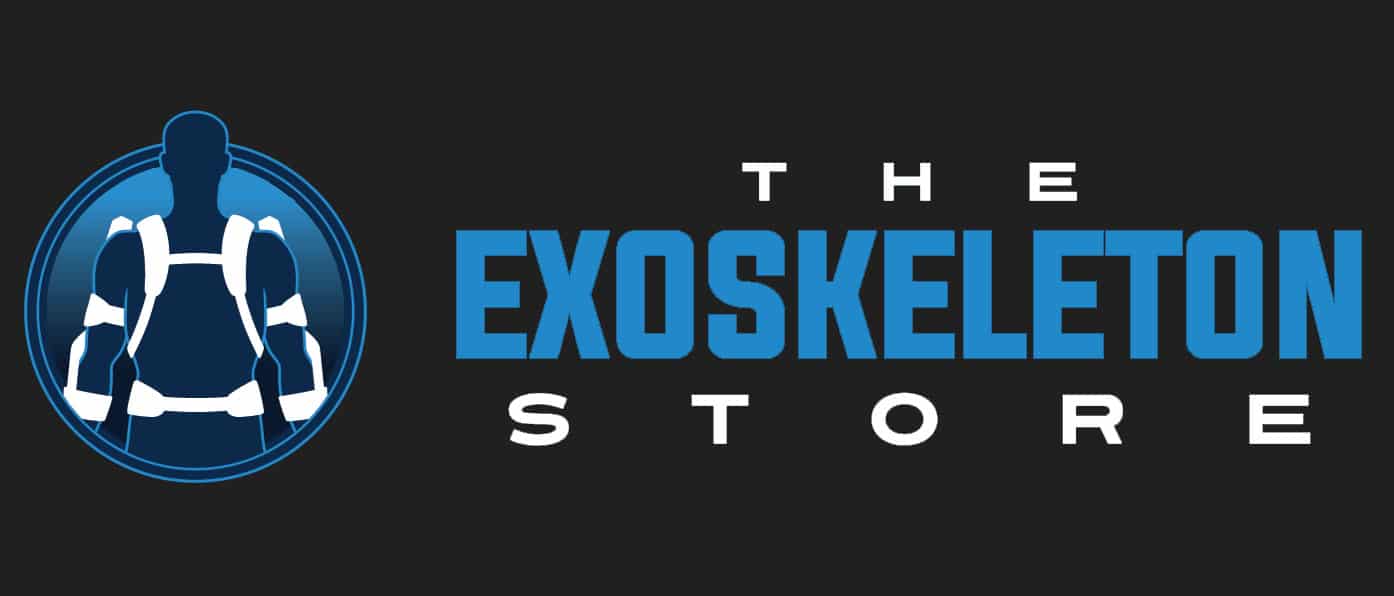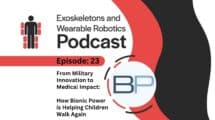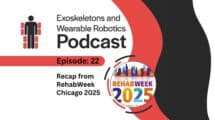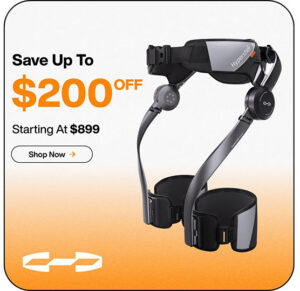Welcome to Episode 17 of the Exoskeletons and Wearable Robotics podcast, where hosts Dr. Thomas Sugar (Wearable Robotics Association) and Bobby Marinov (Exoskeleton Report) are joined by Zen Koh, Founder & CEO of MotusAcademy, and Ambassador at IISART. Zen does a phenomenal job balancing technology with businesses, while sharing his insights on the present and future of rehabilitation robotics technology.
https://www.youtube.com/watch?v=-l71aMePsPU
Main Topics: 00:00 Preview & Introduction 01:39 Introduction to MotusAcademy 07:46 How does one direct more attention towards rehabilitation robotics? 15:12Working collaboratively with MotusAcademy 20:53 Rehab Week – bringing people and organizations together 29:53 Creating a physical rehabilitation robotics ecosystem 45:29 Wearable robotics ROI 52:41 What could be the first application of an exoskeleton that you can’t just go without?
The episode is also available on Spotify and all major streaming platforms!
For more on the topics, visit:
- Motus Academy: https://motusacademy.org/
- IISART: https://iisart.org/
- WearRA: https://wearablerobotics.com/
Special thanks to all of our Patreon supporters for supporting this educational effort!
AI Generated Summary of Episode 17:
The conversation begins by framing the rehabilitation-robotics sector as simultaneously inspiring and misunderstood: many outsiders view exoskeletons as flashy technology, yet they underestimate the difficulty of start-ups building sustainable businesses at today’s modest sales volumes. To bridge that gap, the episode introduces a dual focus on market education and market creation, highlighting the need to cultivate informed demand rather than wait for it to appear organically.
A detailed discussion follows on the formation and mission of Motus Academy. Its core purpose is to disseminate knowledge and catalyze collaboration across five pivotal stakeholder groups: (1) end users and their caregivers, whose long-term familiarity with devices can eclipse that of clinicians; (2) clinicians and therapists, who must feel technologically competent and confident; (3) engineers and researchers, whose innovations expand the field’s frontiers; (4) entrepreneurs and industry operators, who transform laboratory prototypes into maintainable, regulatory-compliant products; and (5) policy and reimbursement decision-makers, whose funding choices determine market viability. Motus Academy positions itself as a neutral hub where these groups converge, exchange feedback, and shape product requirements early.
The conversation then turns to the “flywheel” challenge: how to keep momentum in a niche industry that competes, often unfavorably, with flashier sectors such as AI, VR, and AR for publicity and capital. Large conferences, podcasts, and cross-association events are portrayed as critical accelerators because they provide recurring touchpoints, boost visibility, and reassure young professionals that the field offers long-term career prospects.
A broader reflection on investment highlights rare but encouraging cases where mainstream venture funds have backed rehabilitation-robotics companies. Attracting such capital is framed as essential for achieving the “too-big-to-fail” scale that entices new engineers, mitigates perceptions of fragility, and ultimately shifts exoskeletons from a “nice-to-have” to a “must-have.” The speakers liken the anticipated inflection point to the smartphone revolution: once usability, comfort, and affordability converge, wearable robots could become as commonplace and indispensable as mobile phones.
Collaboration emerges as the dominant strategy for reaching that tipping point. Motus Academy routinely partners with global associations such as ISPO’s International Society for Prosthetics and Orthotics (ISPO), WearRA’s WearRAcon, and regional groups in Asia, Europe, and North America. Joint white papers, webinars, student workshops, and planned podcasts are used to pool expertise, avoid redundant R&D, and lower costs.
This cooperative ethos extends to Rehab Week, a biennial umbrella event that merges tracks from multiple societies, including neuro-rehabilitation robotics, functional electrical stimulation, virtual-reality rehabilitation, and assistive-technology organizations, under one professional event-management team. The format lets academics, clinicians, and industry exhibitors mingle in a single venue, fostering cross-pollination that is often missing from siloed conferences.
With each new host city, local societies add region-specific elements such as continuing-education credits to draw domestic delegates, while international attendance supplies a global perspective. The upcoming edition (12–16 May 2025 in Chicago) is already tracking record-high pre-registrations, signaling growing interest and validating the multi-society model.
The episode closes on a pragmatic yet optimistic note: sustained progress will rely less on any single breakthrough and more on relentless, collective effort: educating stakeholders, refining user experience, and proving real-world outcomes, until wearable robotics feels as intuitive to clinicians and patients as smartphones feel to consumers today.











Add Comment